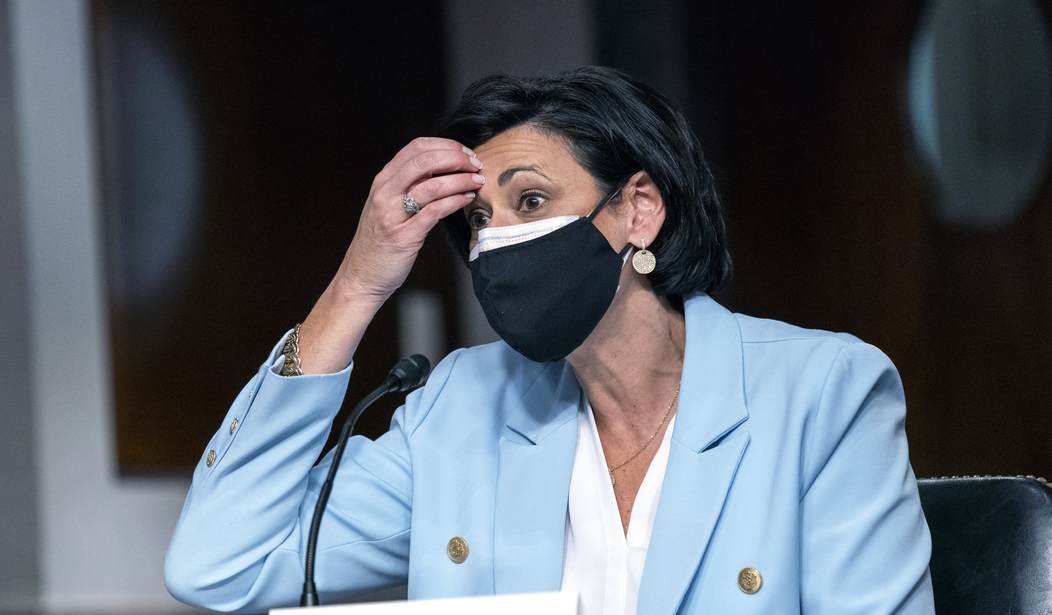Wednesday, the Associated Press (AP) patted itself on the back. Apparently, the editorial staff decided with the advent of omicron that case counts were no longer a good measure of the pandemic. They even got some quotes from their pals at other left-leaning outlets to support their new point of view. From the AP’s pronouncement on COVID coverage:
The number of case counts soared over the holidays, an expected development given the emergence of a variant more transmissible than its predecessors.
Yet these counts only reflect what is reported by health authorities. They do not include most people who test themselves at home, or are infected without even knowing about it. Holidays and weekends also lead to lags in reported cases.
If you could add all those numbers up — and you can’t — case counts would likely be substantially higher.
For that reason, The Associated Press has recently told its editors and reporters to avoid emphasizing case counts in stories about the disease. That means, for example, no more stories focused solely on a particular country or state setting a one-day record for number of cases, because that claim has become unreliable.
We should congratulate the AP for coming to the conclusion of every leading epidemiologist in 2020. Even though it seems like a lifetime ago, the original goals of federal COVID mitigation were to slow the spread and flatten the curve. These goals had everything to do with preserving hospital capacity. The early pandemic concern was outstripping the number of hospital beds and ventilators available because of the news coming out of Italy.
Further, no media outlet was reporting cases of COVID. They were reporting positive tests. There was never any insight into how many people were experiencing COVID symptoms, indicating they were likely to transmit the virus. The widely used PCR tests were used as a binary yes or no answer when they required interpretation. According to the World Health Organization:
Most PCR assays are indicated as an aid for diagnosis, therefore, health care providers must consider any result in combination with timing of sampling, specimen type, assay specifics, clinical observations, patient history, confirmed status of any contacts, and epidemiological information.
The same notice told providers that weak positive results required careful interpretation. It notes that the viral load is inversely proportional to the cycle threshold value. So the higher the cycle thresholds (Ct), the lower the viral load. In his recent book A Plague Upon Our House, Dr. Scott Atlas confirms that testing in the U.S. used a Ct of 37-40. Yet researchers had demonstrated that replication-competent viruses were found only 3% of the time at a Ct of 35. According to Atlas’s telling, America had a pandemic of oversensitive tests deployed in people with no symptoms.
Related: How Bad Is the Data on COVID? New Numbers From New York Provide Insight
Even The New York Times questioned Ct values in Aug. 2020 and noted as many as 90% of positive results in three states may not contain virus particles capable of causing an infection. Dr. Michael Mina, an epidemiologist at the Harvard T.H. Chan School of Public Health, told the Times, “We’ve been using one type of data [PCR tests] for everything, and that is just plus or minus — that’s all. We’re using that for clinical diagnostics, for public health, for policy decision-making.” He added a yes-no result wasn’t good enough, and that it was the amount of virus that should dictate the infected patient’s next steps. “It’s really irresponsible, I think, to forgo the recognition that this is a quantitative issue,” he added.
So the AP and the rest of the corporate media constantly reported a meaningless number for almost two years. The CDC disease burden estimates as of Nov. 2021 projected that testing missed 3.4 symptomatic illnesses and four infections for every one confirmed infection. As the AP acknowledges, those numbers will increase significantly with omicron. However, the numbers they reported for “cases” were never significant.
The article reports that media outlets will be moving to monitor COVID hospitalizations. However, as data from New York and recent remarks from Dr. Anthony Fauci note, even that has a garbage-in, garbage-out problem. Everyone admitted to the hospital is tested for COVID, even if they have no symptoms. If their test is positive, they get counted in the COVID hospitalization number. It is not clear how many of the included hospitalizations are patients receiving no COVID treatment at all. Until the CDC changes its reporting criteria and Medicare and Medicaid eliminate the perverse financial incentives to find every case, hospitalizations are not a solid metric either.
Because of all the incidental testing, even deaths are not a reliable metric. Assessments in California found that chart reviews reduced the number by 20-25%. Curious journalists would have known all of this sometime in 2020. If the AP had reported the problems with the data, it could have reduced the panic. Either the AP doesn’t have any inquisitive reporters, or pushing panic was the goal all along.









Join the conversation as a VIP Member